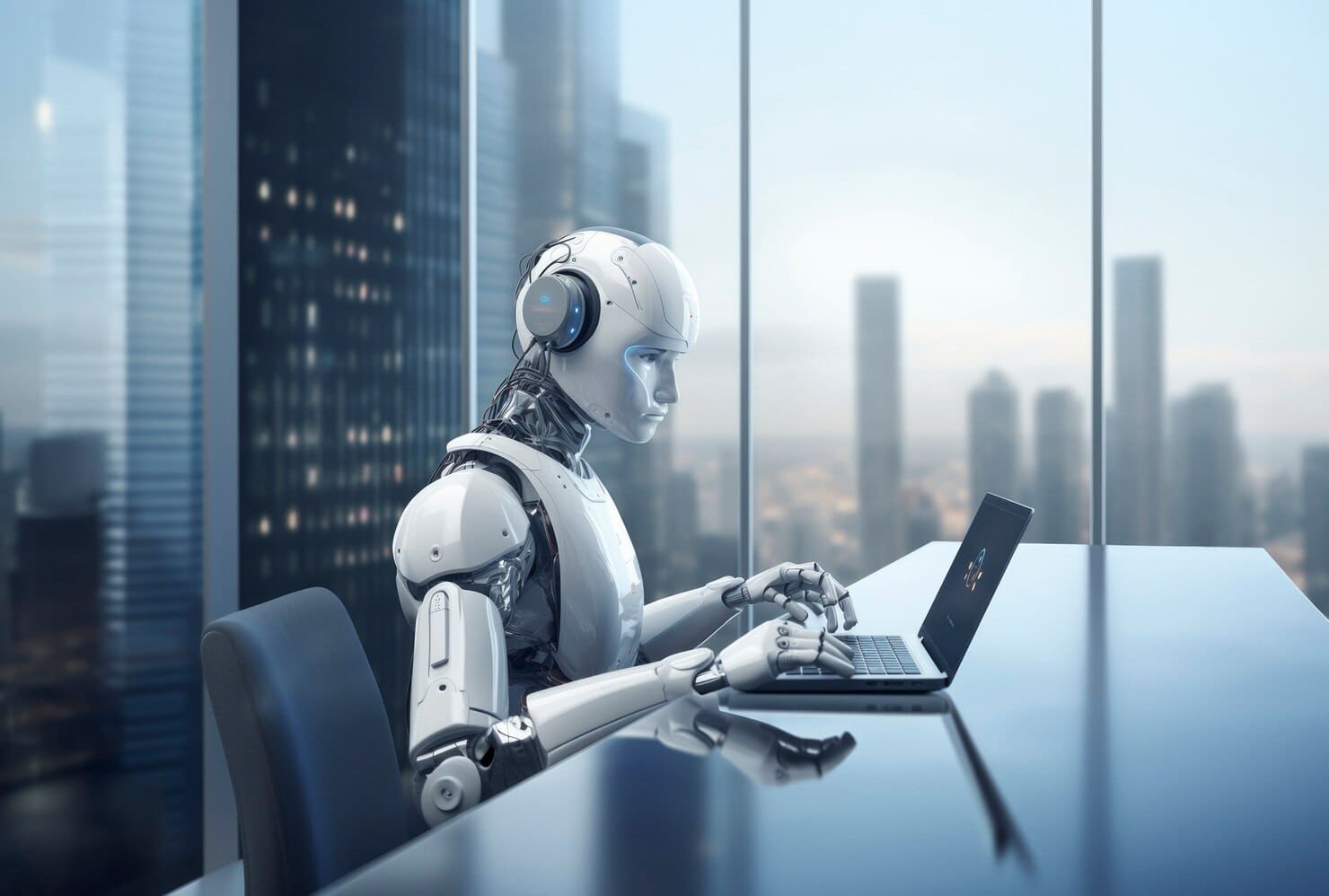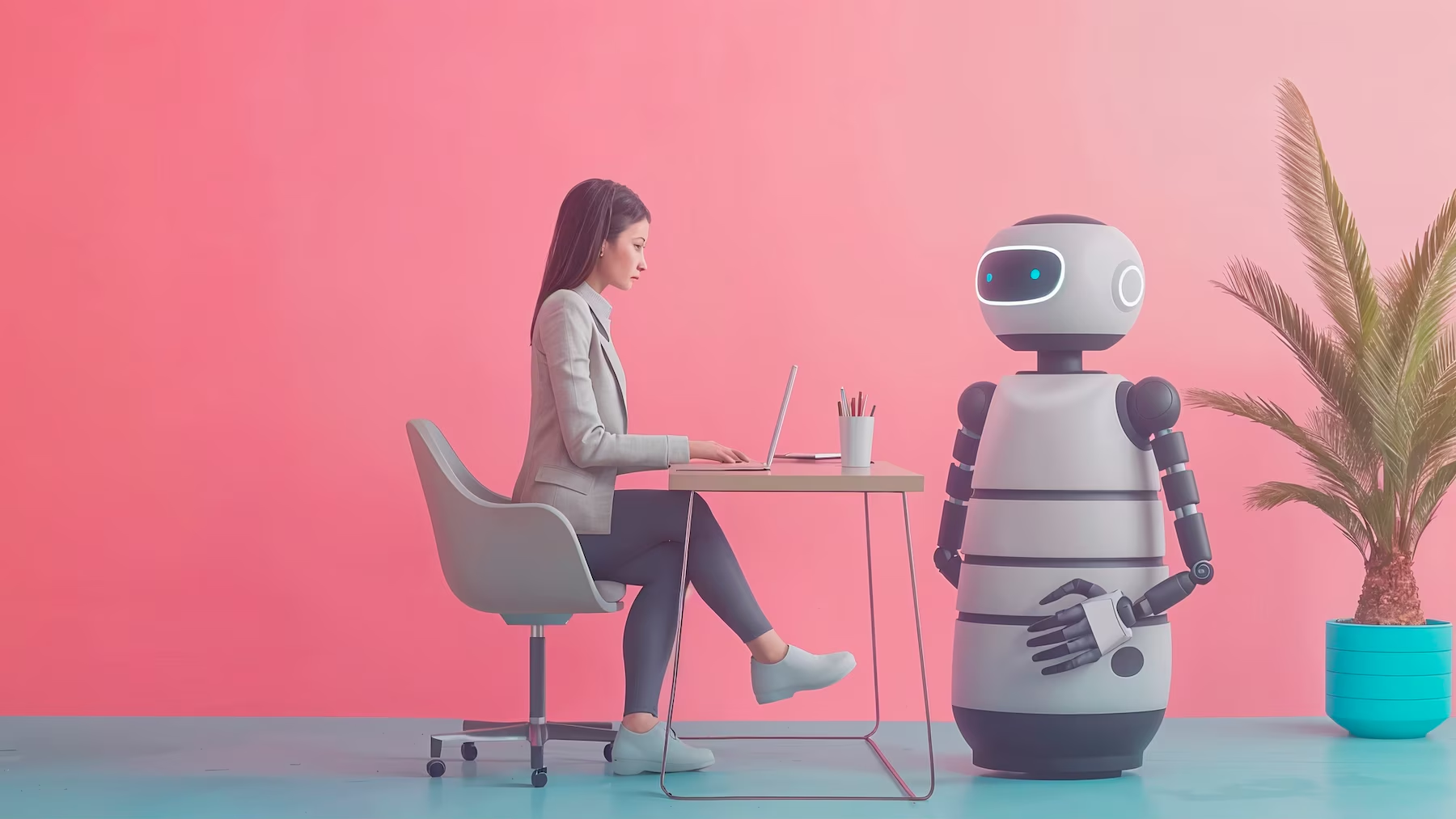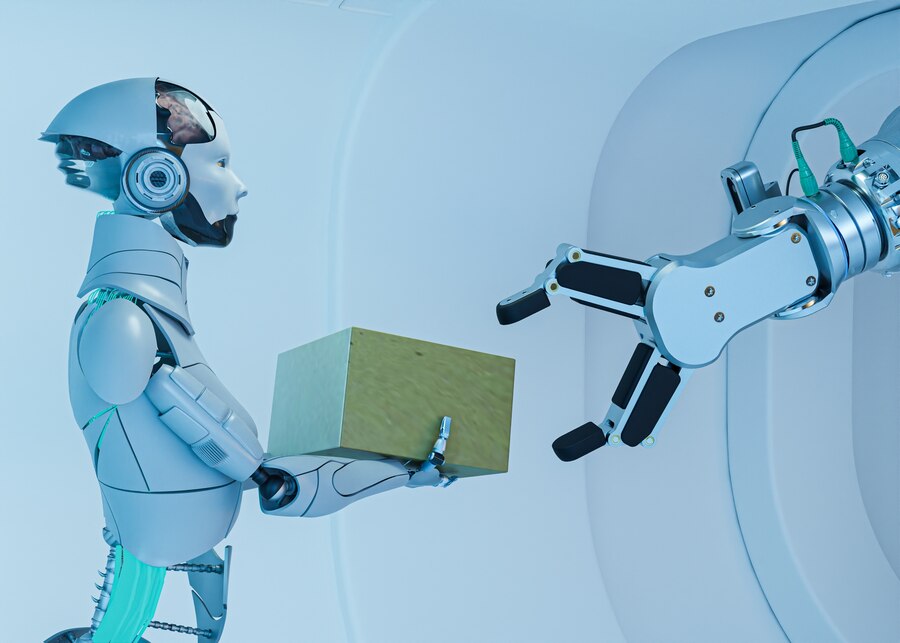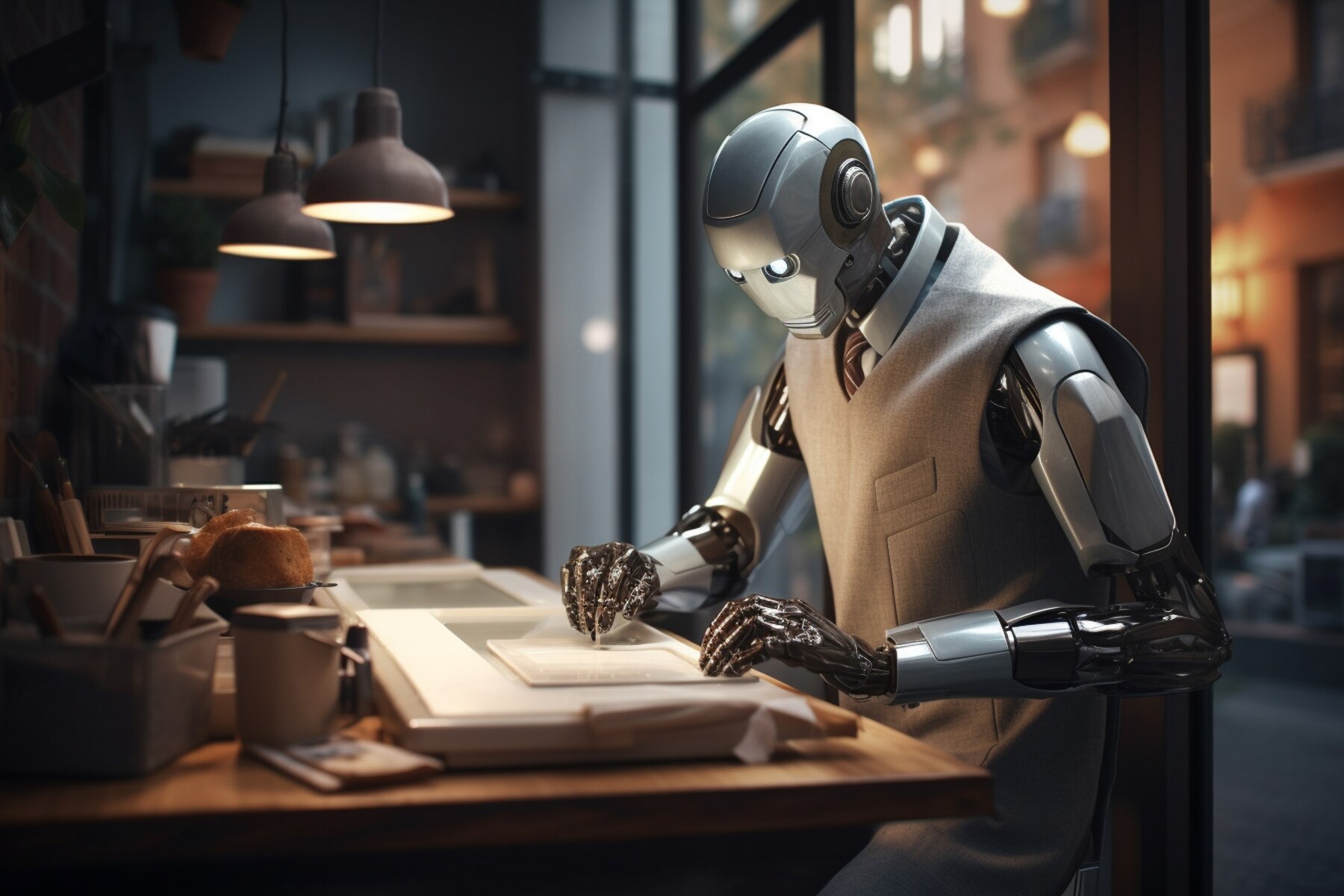
How to Use Humanoid Robots to Improve Workplace Efficiency
Humanoid robots are transforming businesses in the industrial world. AI-Powered Humanoids: An Industry Enhancer These robots reduce costs and solve labour shortages. Humanoid robots are not simply science-fiction fantasies. They are working members in factories and healthcare.
This article examines how humanoid robots are transforming industries. We’ll discuss their pros and cons and explore the future of human-robot cooperation.
Pro Tip:
To successfully integrate humanoid robots into the workforce, businesses should focus on collaborative automation rather than full replacement. Training employees to work alongside robots will maximise efficiency and job retention.
Quick Guide:
- Understanding Humanoid Robots – AI-driven machines designed to perform human-like tasks.
- Industries Transformed – Manufacturing, healthcare, retail, logistics, and education benefit the most.
- Key Benefits – Increased productivity, cost savings, and improved precision.
- Challenges & Ethics – Job displacement, high costs, data privacy concerns, and AI limitations.
- Future Trends – Advanced AI, greater industry adoption, and improved human-robot collaboration.
Important:
High initial investment in hardware, software, and training.
What Are Humanoid Robots?

Humanoid robots are machines designed to resemble and interact with humans. They have human-like features. Unlike traditional industrial robots, they have arms, legs, and facial expressions. These robots have AI, machine learning, and advanced sensors. This setup helps them navigate, learn, and do complex tasks.
Key Features of Humanoid Robots
- AI and Machine Learning – Ability to analyse data, improve performance, and adapt to new tasks.
- Natural Language Processing (NLP) – Enables communication with humans in multiple languages.
- Dexterity and Mobility – Advanced robotic limbs allow them to perform intricate tasks.
- Computer Vision – Helps identify objects, people, and surroundings for better decision-making.
Industries Transformed by Humanoid Robots
Manufacturing and Automation
The manufacturing sector has been a pioneer in adopting robotic technology. AI-powered humanoids are pushing automation beyond traditional robotic arms in production lines.
How They Are Used:
- Assembly Lines – Humanoid robots can assemble products precisely, reducing human error.
- Quality Control – Equipped with vision systems, they inspect products for defects.
- Collaborative Work – They work alongside human employees in cobotic (collaborative robotic) environments.
Example:
Tesla and BMW now use humanoid robots in their factories. These robots help make complex assembly tasks easier.
Healthcare and Elderly Care
The healthcare industry faces a workforce shortage. So, humanoid robots could be a good solution.
How They Are Used:
- Patient Assistance – Humanoid robots help patients with mobility, medication reminders, and daily tasks.
- Surgical Assistance – AI robots like the Da Vinci Surgical System help doctors do precise surgeries.
- Elderly Care – Robots such as Pepper and Grace offer emotional support. They also monitor vital signs and alert caregivers during emergencies.
Example:
Japan has many older adults. To help them, the country uses humanoid robots, which improve the quality of life for many seniors.
Retail and Customer Service
Retail businesses are integrating AI-powered humanoids to enhance customer experiences.
How They Are Used:
- Retail Assistants – Robots greet customers, answer queries, and help with purchases.
- Inventory Management – They scan and track stock levels to prevent shortages.
- Security and Surveillance – Humanoid robots monitor store activities and detect suspicious behaviour.
Example:
SoftBank’s Pepper Robot has been deployed in retail stores and banks to interact with customers and provide guidance.
Logistics and Warehousing
In logistics, efficiency is key, and humanoid robots are improving warehouse operations.
How They Are Used:
- Packing and Sorting – Robots handle heavy lifting, sorting, and packaging.
- Inventory Control – They use AI to track and manage warehouse stocks.
- Last-Mile Delivery – Some humanoid robots are being tested for autonomous deliveries.
Example:
Amazon’s Robotics Division is making humanoid robots. These robots will help improve warehouse logistics and reduce the need for humans to perform repetitive tasks.
Education and Research
Educational institutions and research facilities use humanoid robots to advance learning and innovation.
How They Are Used:
- STEM Education – In classrooms, robots teach coding, robotics, and AI concepts.
- Autism Therapy – Specialised humanoid robots help children develop social and communication skills.
- Human-Robot Interaction Research – Universities study how robots can integrate seamlessly into daily life.
Example:
Nao, a humanoid robot, is widely used in educational institutions for teaching and therapeutic purposes.
Benefits of Humanoid Robots in the Workforce

- Increased Productivity – Robots work 24/7 without breaks, boosting output.
- Reduced Labour Costs – Businesses save on wages, benefits, and training.
- Enhanced Precision and Safety – Robots perform hazardous tasks, reducing workplace injuries.
- Bridging Labour Gaps – Industries facing worker shortages, such as healthcare, benefit significantly.
- Improved Customer Experience – Retail and service industries see higher engagement and efficiency.
Challenges and Ethical Concerns
Job Displacement and Workforce Anxiety
One of the biggest concerns about the future of the robotic workforce is job loss. While robots create new roles in AI and robotics maintenance, traditional jobs may decline.
High Initial Costs
Advanced humanoid robots require significant investment in technology, training, and infrastructure.
Ethical Dilemmas
- Data Privacy – AI-powered robots collect and analyse large amounts of personal data.
- Bias in AI – Poorly designed AI models can reinforce biases in decision-making.
- Human Interaction Limitations – Robots lack genuine empathy and emotional intelligence.
Technical Limitations
- AI and robotics are still evolving, and errors or malfunctions can disrupt operations.
- Many robots cannot fully replace human intuition and problem-solving.
The Future of Humanoid Robots in Industry
The future of humanoid robots is promising, with significant developments expected in the coming years:
- Advanced AI Capabilities – Future robots will have enhanced decision-making and emotional intelligence.
- More Industries Will Adopt Humanoid Robots – This includes agriculture and legal services.
- Human-Robot Collaboration – The goal is to build cobots (collaborative robots) that assist people, not replace them.
- Regulation and Ethics Frameworks – Governments will make policies to ensure AI and robots are used responsibly.
What Experts Say:
- Elon Musk predicts that humanoid robots will eventually surpass human labour efficiency.
- Boston Dynamics continues to push the limits of mobility and AI in humanoid robotics.
FAQ: How Humanoid Robots Are Changing the Workforce
1. What are humanoid robots used for?
Humanoid robots are used in manufacturing, healthcare, retail, logistics, and education to perform tasks like assembly, customer service, patient care, and warehouse management.
2. Will humanoid robots replace human workers?
While some jobs may become automated, humanoid robots are primarily designed to assist humans rather than replace them. New jobs will emerge in AI maintenance, robotics programming, and human-robot collaboration.
3. What are the benefits of humanoid robots in industries?
They increase productivity, reduce labour costs, enhance precision, and help in sectors facing workforce shortages, such as healthcare and logistics.
4. What are the challenges of using humanoid robots?
Key challenges include high costs, AI limitations, potential job displacement, ethical concerns like data privacy, and the need for regulatory frameworks.
5. How do humanoid robots impact customer service?
Retail and hospitality businesses use humanoid robots to greet customers, answer questions, and manage inventory, enhancing efficiency and customer experience.
Embracing the Robotic Workforce Future

Deployment of AI-powered humanoids into the workforce is not a question of if but when. Early adopters have a tremendous competitive edge; no business can afford to ignore them.
Humanoid robots have challenges, but their potential is enormous. They enhance productivity, reduce costs, and help people work more effectively. They become valuable assets. The trick is to strike a balance between human know-how and robotic automation.
Are you prepared for a future with a robotic workforce? Whether you’re a business executive, an employee or a tech buff, understanding this shift is essential for adapting to the next era of work.


